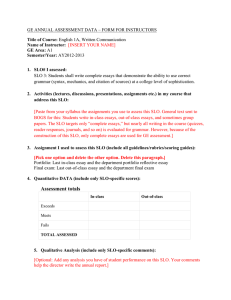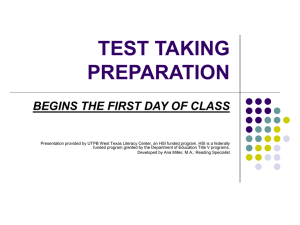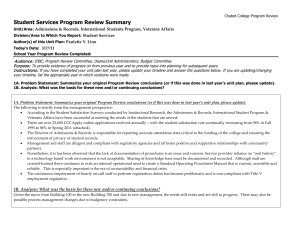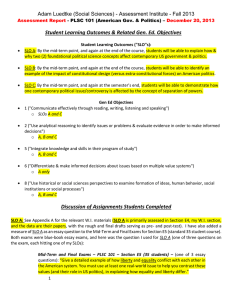final exam preparation
advertisement
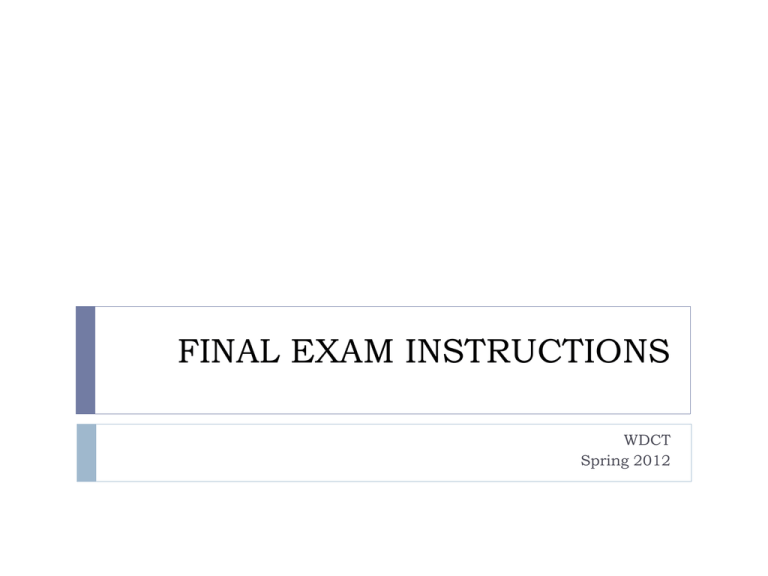
FINAL EXAM INSTRUCTIONS WDCT Spring 2012 Exam format 15 multiple-choice questions (15 x 01 = 15 points) 15 false-true questions (15 x 01 = 15 points) 15 fill-in-the-blank questions (15 x 02 = 30 points) 4 essay questions (04 x 10 = 40 points) Total: 100 points Duration: 120 minutes Materials: not allowed Focus on Student Learning Outcomes (SLOs) on the syllabus Multiple choice questions Chapter 4 – SLO: Understand the effects time, stress, and organizational management have on performance Typical multiple-choice question for chapter 4: Signs of negative stress include: a. Being illogical b. Losing control of your temper c. Becoming emotional d. All of the above e. None of the above False-true questions Chapter 5 – SLO: Demonstrate an understanding of consistently practicing ethics and confidentiality in a workplace Typical false-true question for chapter 5: It is inappropriate to spend your work time on non-company activities. (T) Fill-in the blank Sample Exam Questions: last page of each chapter Chapter 13 – SLO: Understand how networking is a powerful job search tool Typical fill-in-the-blank question for chapter 13: The following people could be included in a professional network: _______________, _________________, _____________, _____________, and ______________ Fill-in the blank (cont) Suggested answer: (any 5 of these groups of people) Co-workers Supervisors Instructors Family Friends Neighbors Any other group of people Essay questions Chapter 9 – SLO: Demonstrate an understanding of basic communication tools and their appropriate use Typical essay question for chapter 9: Explain the key differences between verbal and nonverbal communication. Essay questions (cont.) Suggested answer: Verbal communication is the process of using words to send your message. Word choice is very important. A big part of verbal communication is listening to the receiver to ensure that your message has been interpreted correctly. Nonverbal communication is communicating through body language. Body language includes eye contact, facial expressions, tone of voice, and the positioning of your body. Nonverbal communication also includes the use of silence and space.





